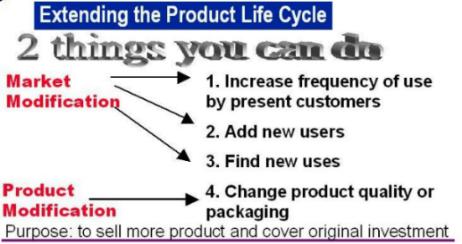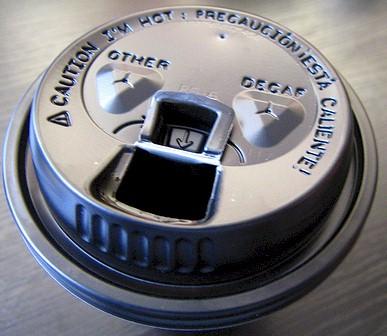extending the PRODUCT LIFE CYCLE

| Product
Modification
extending the PRODUCT LIFE CYCLE |
 |
| INTRODUCTION | . | Product
Modification is an attempt by companies to extend the length of the Product
Life Cycle by making small, or big changed to a product to keep customers
interested in the product, or cause them to buy accessory items to keep
the product popular.
WTGR |
Chapter 10
 |
 |
| Influences
on Product Modification |
. | In
the first years of the new Millenium, we see a lot of examples of Product
Modification
What are the driving forces causing companies to seek new and weird ways to change the product so they can keep selling more? 1.
The intensity of competition - the Competitive Environment,
- in a globalized community of businesses all interlinked, it becomes easier
and easier to copy other people's products, especially consumer electronics
2. The continued advances in technology, the Technological Environment. Technology makes it easier and easier to copy other products. Also, advanced in technology make it more possible to have to features to add on to a product that is several months old 3. The Economic Environment - the need for companies to make more money selling a product (maybe because the cycle was too short) - 4. The Social / Cultural Environment - after the product has been used by the early adopters, it might the possible that other customer groups have slightly different uses, and this can be accomodated if the product packaging or features are altered slightly to make it more appealing to other demographics. WTGR |
Timmies coffee cup lid |

McD's coffee cup lid |
|
|
CONTACT IMAIN PAGE I NEWS GALLERY I E-BIZ SHORTCUTS I INT'L BIZ SHORTCUTS I MKTG&BUSINESS SHORTCUTS I TEACHING SCHEDULE |
| . | |
| MISTAKES ITEXTS USED I IMAGES I RANK IDISCLAIMERI STUDENT CONTRIBUTORSI FORMER STUDENTS I | |
| . |